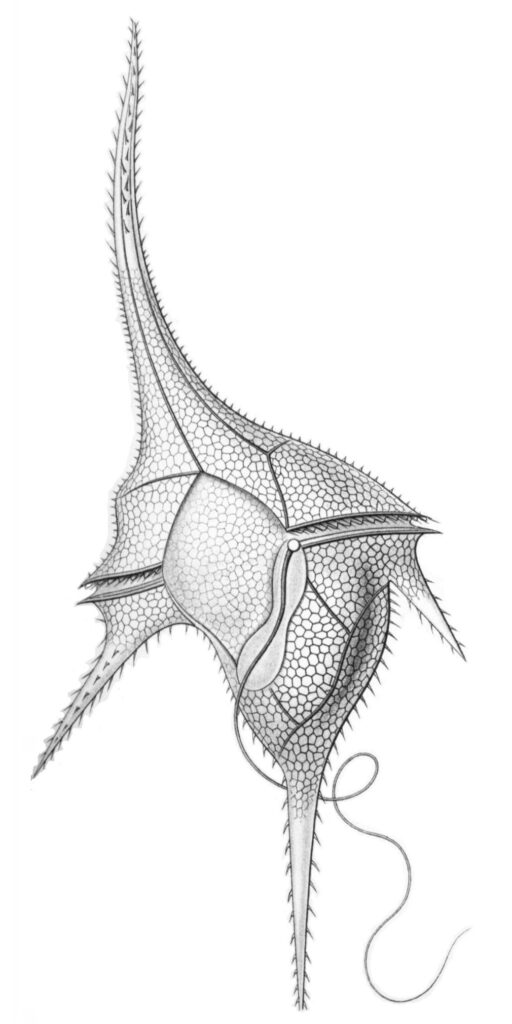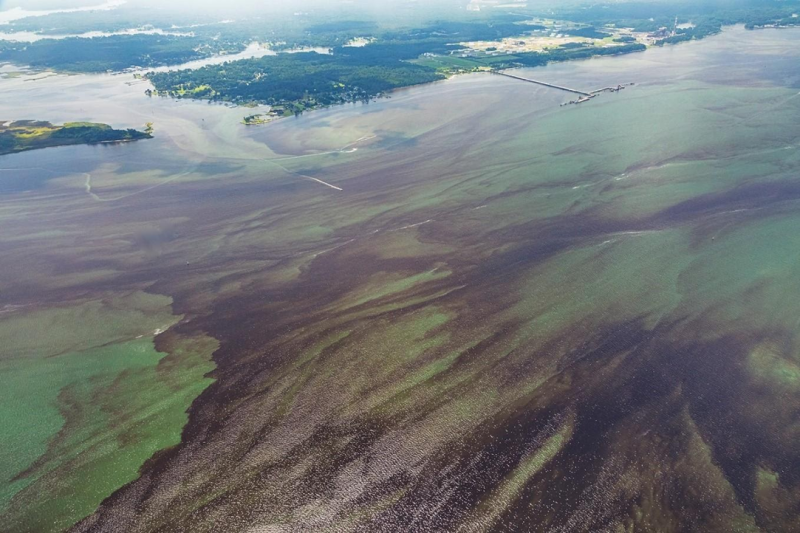Have you ever heard of dinoflagellates? While you might not know them by name, if you’ve ever seen a picture of or experienced bioluminescent waters at night, you’re already acquainted with these microscopic creatures. If you have a fish tank, perhaps you have even experienced these creatures bloom as a wispy red film over everything. They’re more than spectacle or just a nuisance though. Tiny in size and vast in number, these organisms play a crucial role in ecosystems across the globe.

Public Domain, https://commons.wikimedia.org/w/index.php?curid=15512392
Dinoflagellates are single-celled eukaryotic plankton that inhabit many different marine habitats. They possess two flagella, tail-like appendages, that allow them to move through the water. Many dinoflagellates are photosynthetic, meaning they produce their own food from sunlight and are a primary source of food for other organisms. This role as primary producers places them at a foundational position in many food webs. Dinoflagellates aren’t without competition though, they compete with organisms such as diatoms, which are a single-celled algae, as well as other microorganisms, for light and dominance. However, many dinoflagellates are also heterotrophs, which allows them to thrive in many environments, even where light is scarce.
Though dinoflagellates play a crucial role in the carbon cycle through photosynthesis, these organisms also often play a major part in environmental degradation. Nutrient enrichment, eutrophication, and dinoflagellates, along with similar organisms, go hand in hand. Eutrophication is a process that occurs when excess nutrients are introduced to an aquatic system, often from human sources like fertilizer runoff. This nutrient rich environment lends ideal conditions to organisms like dinoflagellates to rapidly reproduce. This is what is known as a harmful algal bloom, or HAB. These blooms are often indicated by a red tint to the water from pigments in the dinoflagellates, and the die offs of these blooms lead to mass decay, which consumes oxygen and is a major cause of dead zones.
Though unstable water conditions can lead dinoflagellate populations to be harmful to the overall environment, a beneficial relationship that dinoflagellates are a part of is their symbiosis with coral reefs. Some species of dinoflagellates live in the tissues of reef building corals, and through photosynthesis of the dinoflagellates, provide the corals with a vast majority of their energy, allowing them to thrive even in nutrient poor environments. A caveat of this relationship is its fragility. Under stressful conditions corals expel their symbionts, leading to coral bleaching. This issue has only been intensifying in recent years with rising ocean temperatures, a condition that stresses corals.
In short, dinoflagellates are tiny but critically important organisms with far reaching effects all over the world’s oceans. They occupy the base of many marine food webs, act as critical oxygen producers, and play a key role in the health of corals, while also posing a threat to environmental health and stability when nutrient load is heavy, often from human interactions with the environment. There is so much more to know about dinoflagellates, and continued research into these organisms could give scientists a clue into how humans can aid the resilience of marine ecosystems.
